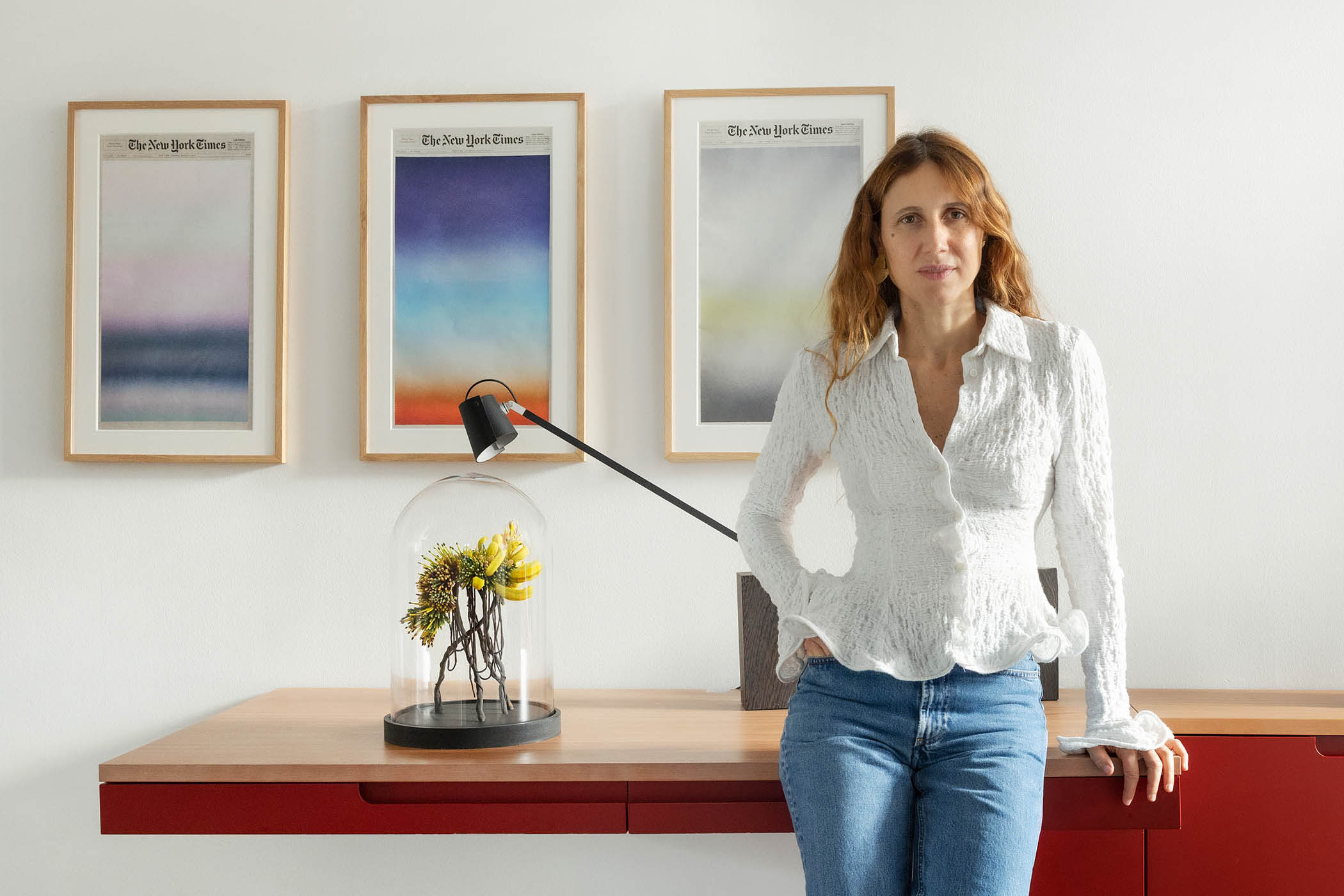A city defined by its world-famous design, Milan has long attracted artistic innovators keen to immerse themselves in the creative scene. And while many have made their mark over the years, few have made as great an impression as Valentina Ciuffi.
After almost two decades discovering and curating the design world’s most compelling stories, Ciuffi is undoubtedly one of the Milan design scene’s most respected figures. Having started out as a journalist before co-founding the art and design platform Alcova, she’s also the head of her own agency, Studio Vedèt. And the city apartment she shares with her creative director husband, Andrew Haug, and their three-year-old daughter, Lina, really allows her taste to shine.

Quirky coffee tables mix up shape, colours and textures in the living room
“The thing I love about this house,” she says, “is that most of the things inside it are by designers I know personally and have a strong connection to.” Examples include the two quirky coffee tables in the main living space, by the New York studio Objects of Common Interest, which have been placed on a huge, patterned rug by the artist Stefania Ruggiero. On the other side of the room is a dining table crafted from pieces of marble that were exhibited at Alcova in 2022, which her co-founder Joseph Grima had made into the shape of Stromboli, Ciuffi’s favourite Italian island.
Artworks by Atelier dell’Errore, the Italian non-profit co-operative art studio for neurodivergent artists, take pride of place on the walls, naturally lit by floor-to-ceiling windows. The Carolino bar cart by Older Studio is a prized possession, since the founders of the studio, Letizia Caramia and Morten Thuesen, are Ciuffi’s close friends. “They were here for Sunday lunch this week and Morten said it looks as at home here as it does in their apartment,” she says. “It’s a real family vibe.”
The couple narrowed a shortlist down from 35 to seven apartments, and the final decision fell to Haug. “Because I really didn’t want to move to New York and he was doing something I wasn’t brave enough to do,” Ciuffi tells me, smiling. “But I had a very good feeling about this place.”
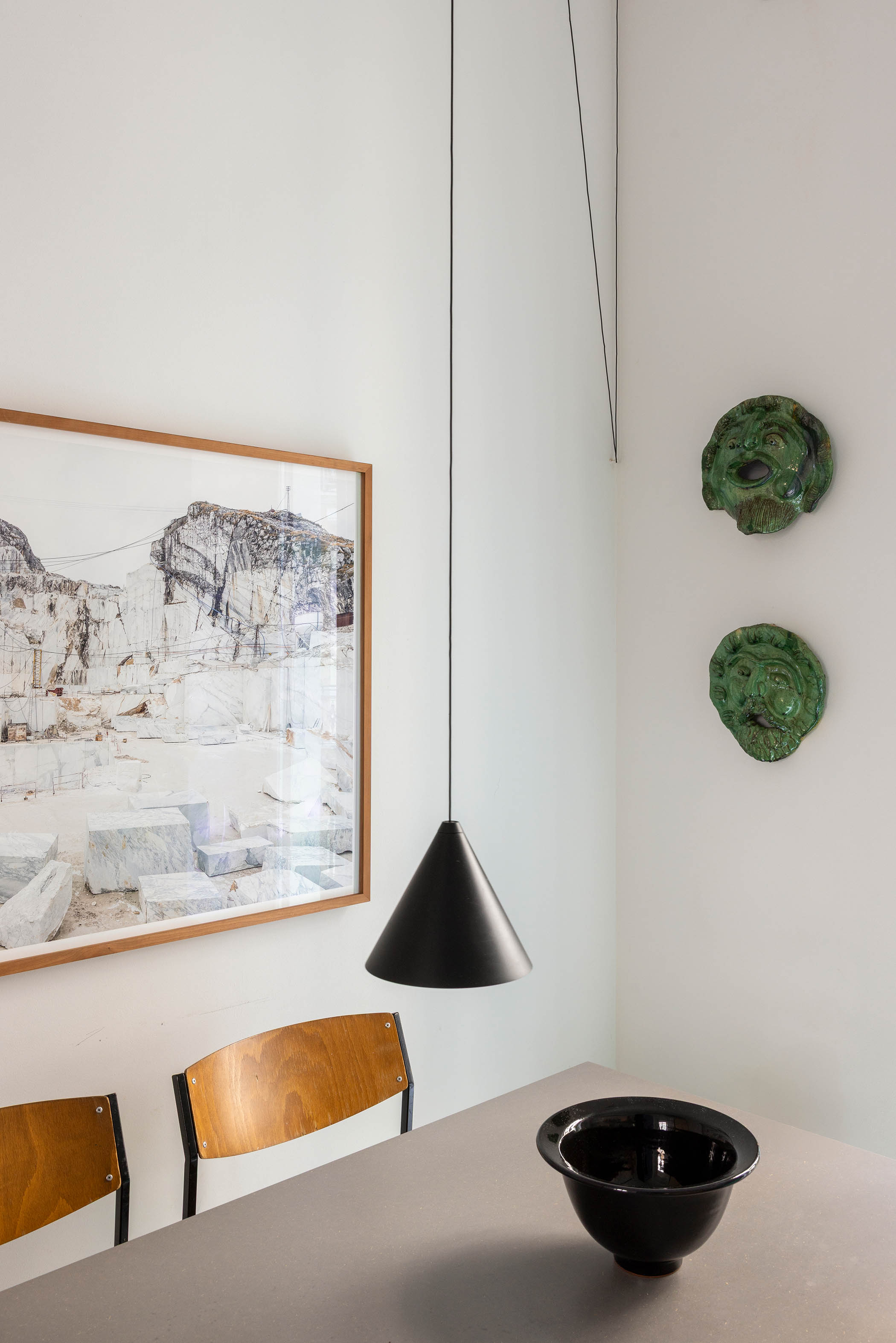
A Flos pendant light brings striking yet simple shape
It was family that brought Ciuffi to this apartment in the first place, just over three years ago. Having recently finished restoring their previous flat, she and Haug discovered they were expecting their daughter and would need more space. (The flat was also doubling up as Studio Vedèt HQ, which added to a sense of being cramped.) At the time, Ciuffi and Haug were in a long-distance relationship. Haug made arrangements to relocate permanently from New York to Milan, and the search began to find a new family home.
In January 2022, a nine-month renovation of the apartment, built in the 1920s, began. This time frame was impressive, given that the work involved specialist restoration and alterations to the footprint. “I was due to give birth in September, so I told the team they would be held responsible if it wasn’t finished by then,” Ciuffi says. “Even now my architect friends ask me, ‘How did you make it happen?’”
The bones of the building were in place already. “As long as the floors were good, we could do everything else,” she says, pointing out the perfectly preserved wooden parquet that is such an attractive feature in many old Italian apartments.

Original parquet in the dining-room, and a marble table in the shape of the island of Stromboli
What’s more, original patchwork marble runs the entire length of their 40m hallway. Ciuffi took the decision to make the most of this impressively proportioned, unusual space by adding a partition, a floor-to-ceiling mirrored wall. On one side are the bathroom, shower room and utility space, while on the other side are the family’s bedrooms, office space and a raised guest snug, all designed by Haug with the help of their friend, the industrial designer Maddalena Casadei. It is “a place full of imperfection,” says Ciuffi affectionately. “Andy is very good at telling me that the house is not a magazine. It’s not designed by interior designers, but by people who like design.”
The experimental snug, for example, “draws inspiration from Japan and the idea that you can almost sleep in a capsule.” It’s a cosy corner that appeals to “our inner child”, says Ciuffi – something that could be said of every room in the house. “I enjoy things that can be playful and appeal to everyone. There has to be something funny or moving to me.”
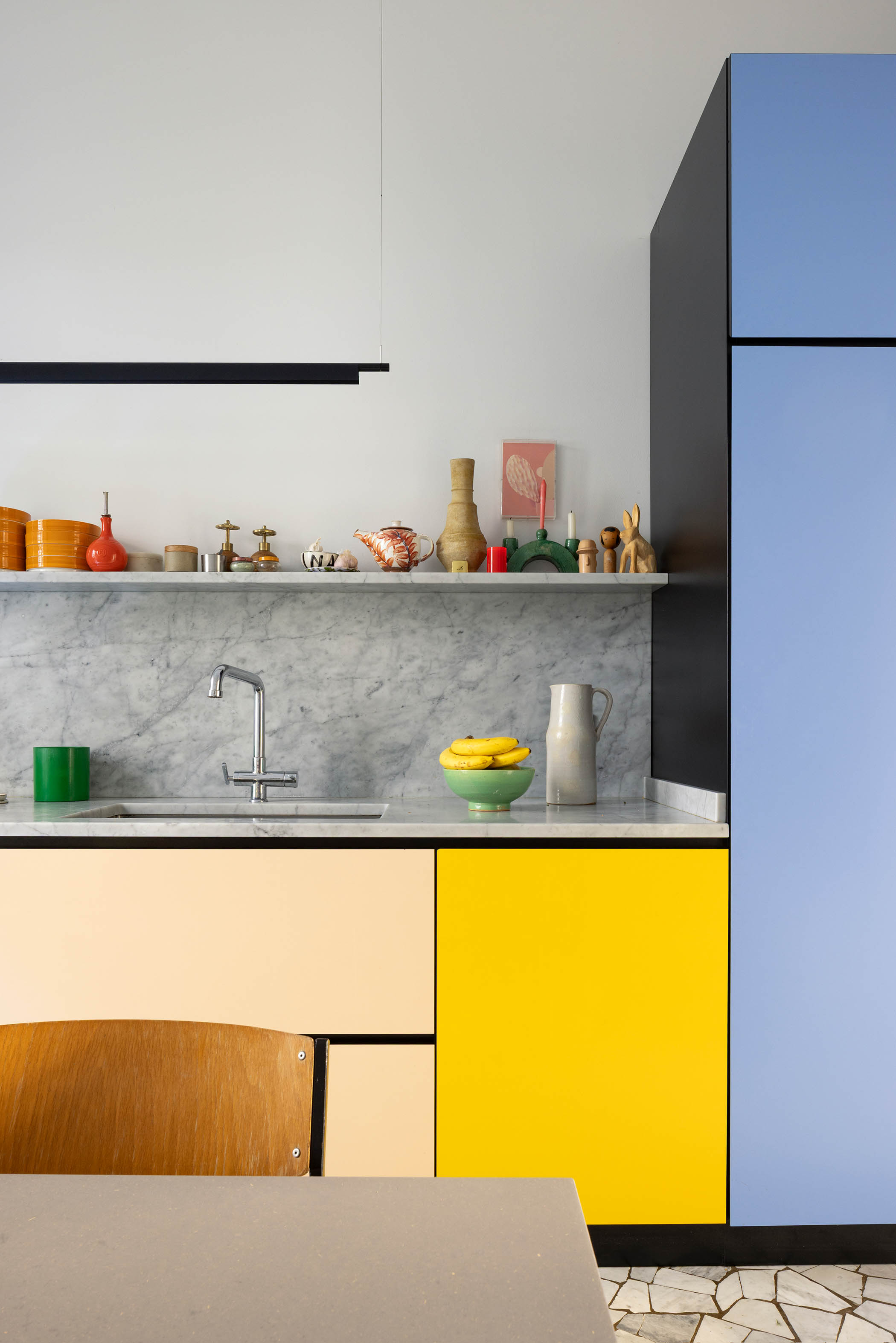
Marble tops and vibrant cabinets in the kitchen, designed by Andrew Haug
To illustrate the point, she hops up to show me something in the couple’s bedroom. “Like this guy! I still cry when I see a new piece,” she says, pointing up at a hazelnut branch and feather lighting installation by industrial designer Maximilian Marchesani that symbolises human modification of the ecosystem. “I really like it when something is surprising, when the aesthetic is completely new and when the story behind it is strong.”
The story prompts her to tell me about a lamp by Diaphan Studio for the brand Delvis (Un)Limited that is due to arrive soon. She points to the wall in the living room where it will live. “There’s always space here for new friends.”
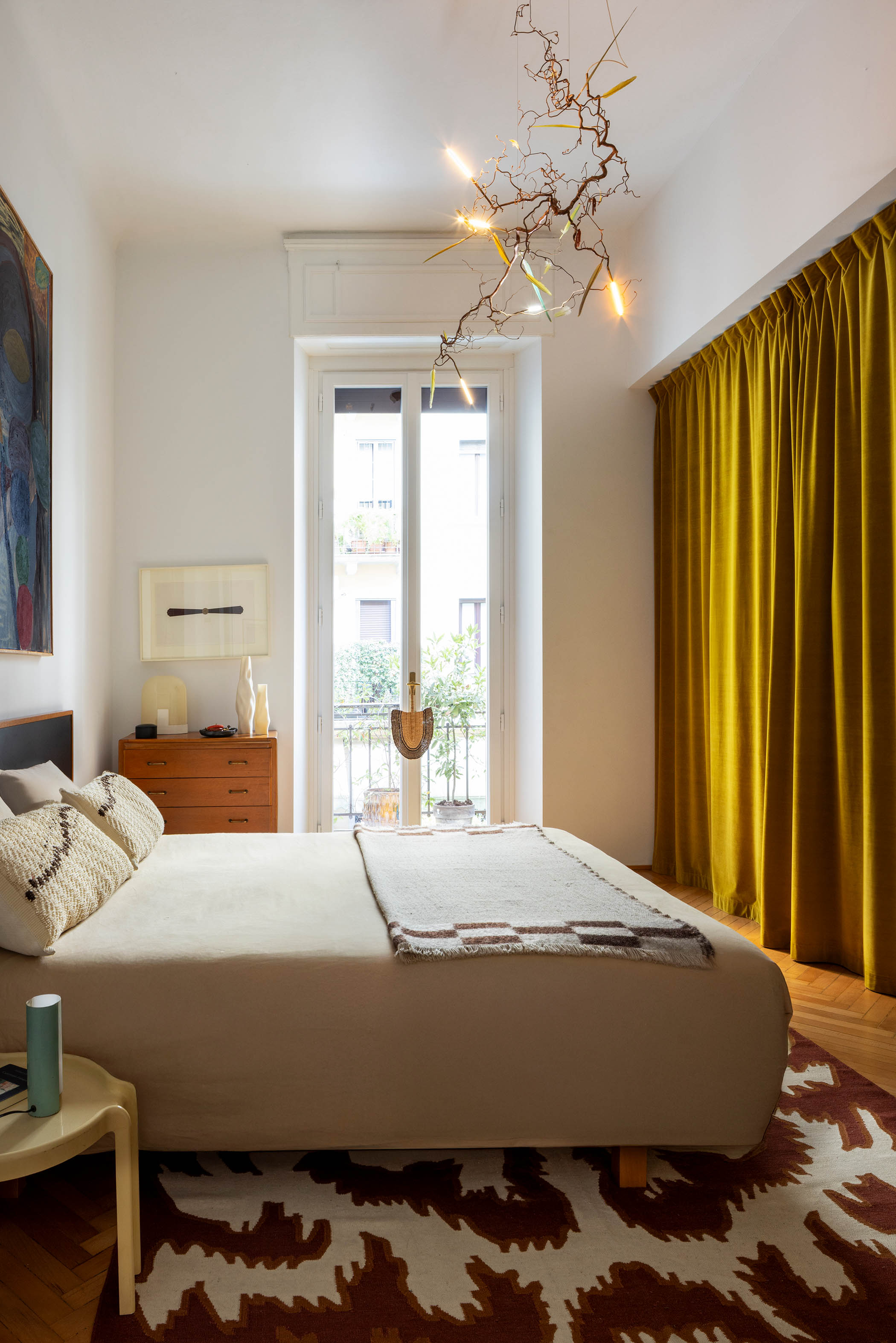
The bedroom, with Ciuffi’s favourite branch and feather lighting installation
Arranged with Ciuffi’s eye, all these friends – despite their differences – seem to get along nicely. In the kitchen, designed by Haug, a marble backsplash sits on top of vibrant cabinets. “In the house where we were preparing to raise our child, we wanted to bring in an element of the playful childlike spirit of the Eames,” she says, referring to the American industrial designers. On the wall nearby are two ceramic masks from the Calabrian ceramic centre Seminara, traditionally crafted to ward off evil. “I’m fascinated by these magical things that can be present in the house to protect us,” Ciuffi whispers. The modest dining table is surrounded by midcentury wooden and steel chairs and is lit by a low-hanging Flos pendant lamp.
In characteristic collaborative spirit, new introductions to the home tend to find their place during dinner parties. “When there is a new element, we usually leave it somewhere, wait to have family or friends over for dinner and everybody gets involved with finding a home for it,” she says. “It’s always a collaboration.”
The flat is in a building a stone’s throw north of Milano Centrale station, an area in marked contrast to the gentrified districts surrounding the historical centre. Those polished postcodes don’t appeal to Ciuffi. “I’ve never been scared to go into neighbourhoods that aren’t cool yet,” she says.
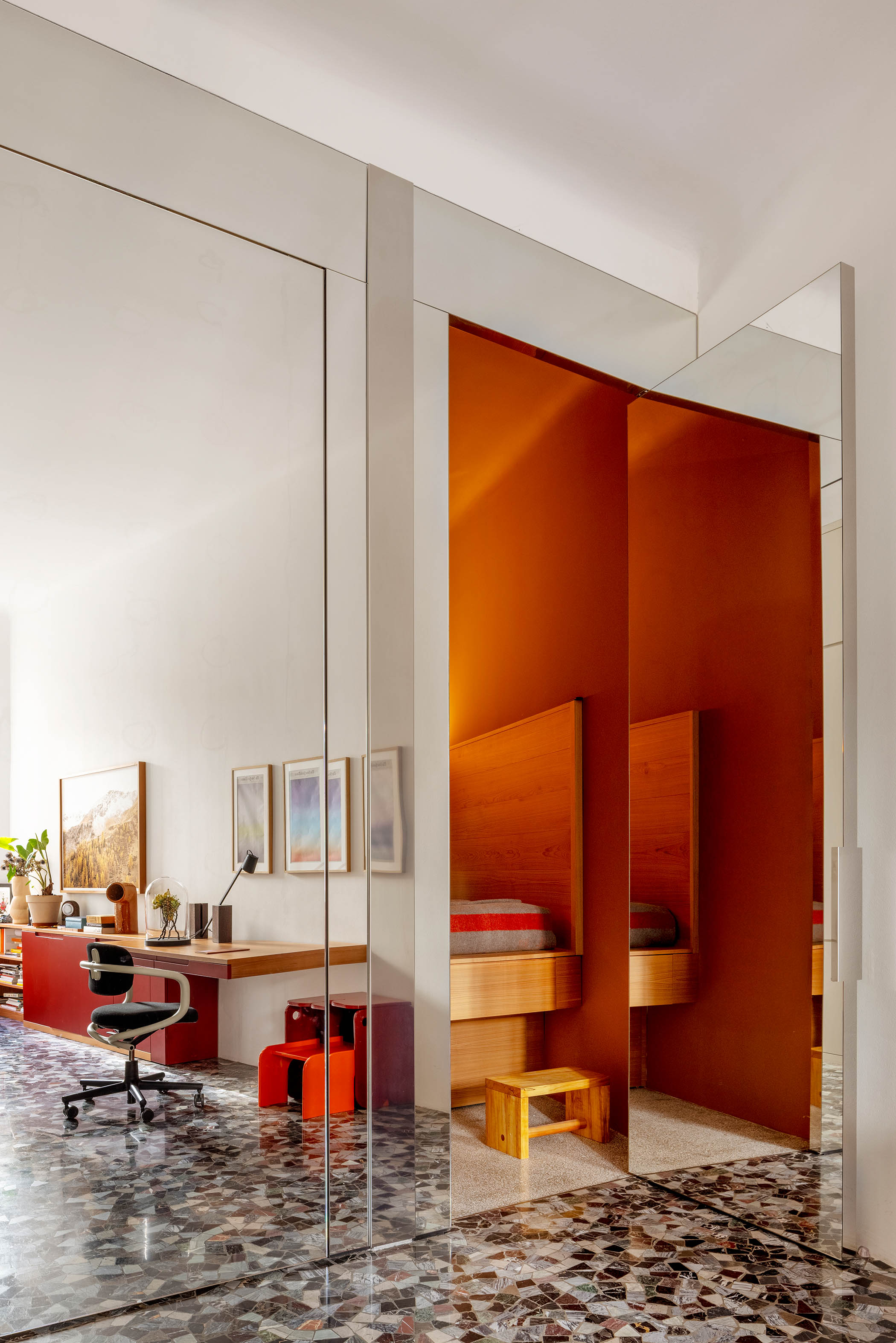
Mirrored walls and original flooring in the hallway
Ciuffi takes the same approach with Alcova. During Milan Design Week she and her co-founder Grima invite guests away from the bustle of the city centre to unexpected locations, creating a pause for reflection and discovery. Previous locations have included an abandoned military hospital and a former slaughterhouse. While taking guests away from the epicentre of Design Week raised eyebrows at first, this year saw around 90,000 visitors, proving the appetite they predicted for such an event. .
“When I first came to Milan in 2008, the space for independent design was easier to find,” says Ciuffi. “Josef and I started Alcova because by 2018 Milan had become unaffordable for young designers and now with so many events during Design Week it can be impossible for a journalist to find you. Putting together the energy of lots of emerging artists and projects can only make them stronger.”
